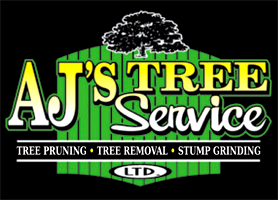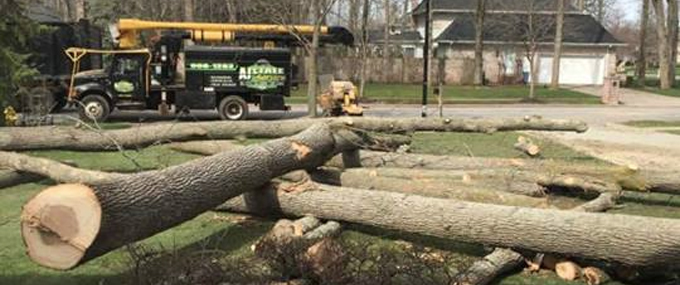Dealing with fallen trees requires careful attention. The task includes assessing the tree’s damage and understanding whether you can handle it or if professional help is needed. But remember, some emergencies demand more than a pair of strong hands alone. Sometimes, calling in the experts is your only and safest bet against further damage. Now, let’s delve into how you can figure out the extent of tree damage.
Overview of Dealing with Fallen Trees
Imagine stepping out after a storm and seeing a massive tree blocking your driveway or, worse, leaning dangerously close to your house. It’s a challenging situation for sure, but the first step is to stay calm, assess the severity of the damage, and figure out the best plan of action.
Assessing the severity of the damage involves checking for any signs of structural instability in the fallen tree and nearby structures. Look for visible signs of decay, assess if the tree is leaning in a precarious way, and determine if there are any potential hazards, such as nearby power lines or other obstacles, that could complicate the removal process. Immediate risks need to be addressed promptly, especially if there is a risk of the tree shifting or causing further damage.
Once you’ve evaluated the situation, it’s time to decide whether you can safely tackle tree removal on your own or if professional assistance is required. Factors like the size of the tree, its position, and your own experience and equipment play a crucial role in this decision-making process.
For instance, smaller trees that have fallen in open areas without entangling with other structures might be manageable for some individuals to handle themselves, especially if they have some experience in using chainsaws and proper safety gear. On the other hand, large trees or those entangled with power lines or structures should typically be left to professionals due to the safety risks and technical challenges involved.
The overall goal during this initial phase of dealing with fallen trees is to manage the situation effectively while minimizing risks to property and personal safety. Taking a cautious approach can help avoid further damage and ensure that safety remains the top priority throughout the process.
Navigating through the aftermath of a storm can be a daunting task. Now, let’s move on to examining how to assess tree damage in detail, which plays a pivotal role in determining the right course of action.
Assessing Tree Damage
When it comes to assessing a damaged tree, identifying signs of instability is paramount to ensuring safety and determining the best course of action. First, examine the tree for any noticeable signs of leaning or tilting. A tree that is significantly leaning might pose an imminent risk, especially if it’s leaning towards structures, walkways, or areas frequently accessed by people.
Additionally, evaluating the extent of the damage to the trunk and branches is crucial. Look for obvious indicators of structural compromise, such as cracks, splits, or visible leaning. These visible signs can provide valuable insights into the severity of the damage and help in determining the appropriate measures to be taken.
Checking for Signs of Rot or Decay
Inspecting the base of the tree is essential to identifying any signs of rot or decay. The base provides a clear indication of the tree’s stability. Signs of rot, including fungal growth, soft spots, or hollow areas, could signify significant internal damage that compromises the tree’s overall integrity.
Decay within a tree can significantly weaken its structure and increase the risk of further collapse. Rot or decay weakens the core of the tree, making it more susceptible to breakage or falling during inclement weather. It is important to thoroughly examine all sections near the base and along the trunk for any indications of decay.
By checking for these vital signs and factors, homeowners can accurately assess the level of risk posed by a damaged tree and make informed decisions about the next steps for its management and potential removal.
Assessing tree stability and identifying signs of rot or decay are fundamental steps in storm recovery and ensuring a safe environment for everyone. It sets the stage for developing a plan to address any potential risks associated with damaged trees and helps lay the groundwork for effective recovery strategies.
Emergency Tree Removal Techniques
When dealing with a fallen tree, safety should always be the top priority. Here are some techniques and tips to consider as you work on removing the fallen tree.
Clear the Surrounding Area
Before you start any removal process, it’s crucial to clear the area around the fallen tree of any obstacles or debris to create a safe working zone. This includes removing branches, rocks, or other objects that could hinder your movement and potentially cause tripping hazards. Not only does this make the work easier and safer for you, but it also reduces the risk of additional damage to property or injury during the removal process.
Use Caution with Chainsaws and Cutting Tools
If you’ve made the decision to remove the tree yourself, it’s important to exercise extreme caution when using chainsaws and other cutting tools. These tools can be powerful and dangerous if not handled properly. Always follow the manufacturer’s guidelines for safe use and maintenance of chainsaws and cutting tools. Prioritize wearing appropriate personal protective equipment (PPE) such as gloves, eye protection, ear protection, and sturdy footwear to mitigate potential risks.
Additional Safety Measures:
- When operating a chainsaw, ensure that there are no nearby obstructions.
- Familiarize yourself with proper cutting techniques.
- Always keep in mind that improper use of chainsaws can lead to severe injuries, so taking extra precautions is essential.
Remember that working with trees is inherently risky, even for experienced professionals. Therefore, proceed with the utmost care and consideration for your well-being and that of those around you. If, at any point during the removal process, you feel unsure or uneasy about handling the fallen tree, it may be best to seek professional assistance to ensure your safety and prevent potential accidents.
By being mindful of these safety measures and taking a cautious approach to emergency tree removal, you can mitigate risks and protect yourself from potential harm while effectively addressing the situation at hand.
While it’s possible to handle emergency tree removal as a DIYer, it’s important to recognize your limits and prioritize safety above all else as you work through this process.
When to Hire Professional Tree Removal Services
Facing a fallen tree can be stressful, especially when deciding whether to tackle the job yourself or call in the professionals. Here are some scenarios that should prompt you to consider hiring professional tree removal services:
Extensive Damage
When a tree has suffered extensive damage, such as large, complex falls or significant structural impairment, it’s safer and more practical to enlist the expertise of professional arborists. They possess the knowledge and specialized equipment necessary to handle these challenging situations with precision and care.
Professional arborists are trained to assess the stability of damaged trees and determine the best course of action for their safe removal. In the case of severe damage, attempting a DIY approach could pose significant risks, both in terms of personal safety and property preservation. It’s crucial to prioritize safety and ensure that the tree is removed in a controlled manner to prevent further harm.
Close Proximity to Structures
If the fallen tree is close to buildings, power lines, or other structures, professional tree removal services can ensure safe and controlled removal. The close proximity of a fallen tree to structures introduces potential hazards, making it essential to have experienced professionals handle the removal process.
For instance, if a fallen tree is entangled in power lines or leaning against a building, it requires careful planning and precise execution to avoid causing additional damage or endangering nearby structures. Professional arborists are skilled in assessing these situations and employing techniques to secure the area and carry out the removal without compromising safety.
By engaging professional services for trees situated near structures, you also gain access to their expertise in minimizing disruption and damage during the removal process. This proactive approach can prevent unintended consequences and streamline the restoration of affected areas.
Knowing when it’s appropriate to seek professional assistance for tree removal helps ensure safety and minimize potential risks associated with challenging scenarios. Consequently, it is essential to carefully evaluate the extent of damage and proximity to structures before making informed decisions regarding professional tree removal services.
24/7 Tree Assistance: Quick and Reliable Emergency Removal Services
At AJ’s Tree Service in Buffalo,NY, we understand that tree emergencies can strike unexpectedly, posing risks to your property and safety. Our dedicated team is here to provide swift and reliable solutions with our emergency tree removal services. Whether it’s storm damage, a fallen tree, or any urgent tree-related issue, AJ’s Tree Service is your 24/7 response team.
We specialize in quick and efficient emergency tree removal, ensuring that your property is safe and clear from potential hazards. Trust us to handle tree troubles with expertise, and count on AJ’s Tree Service to be your dependable partner in crisis situations. Get your quote today!

